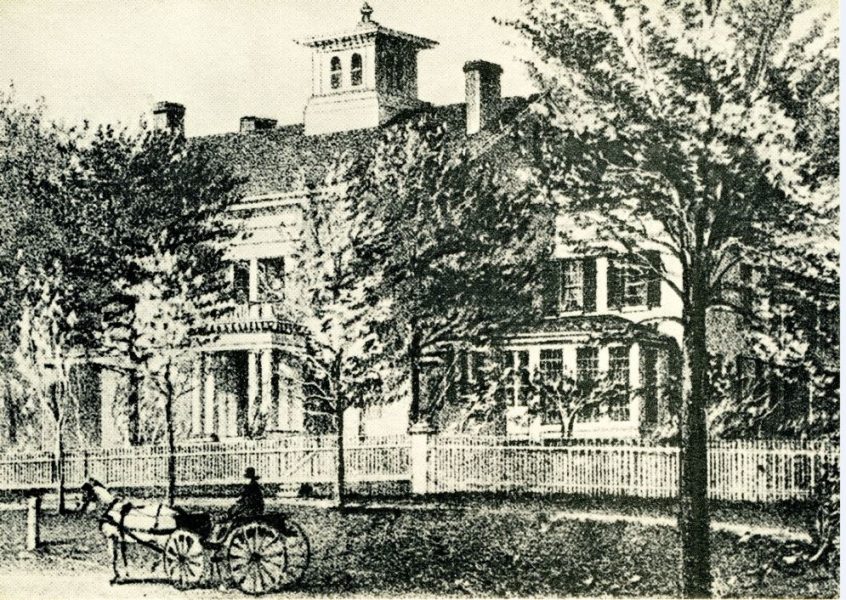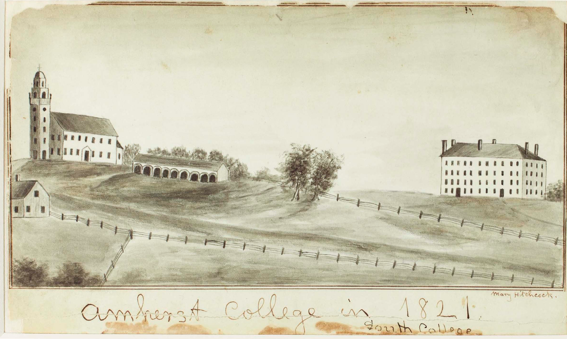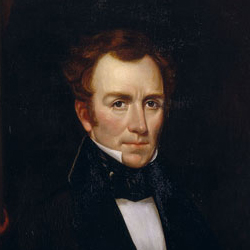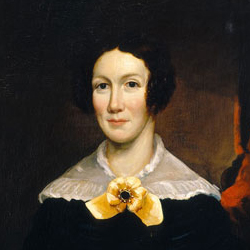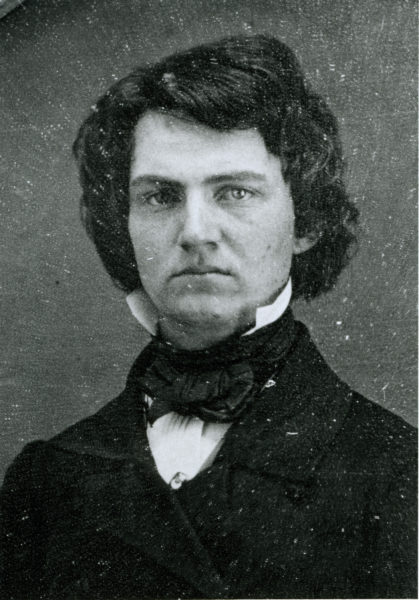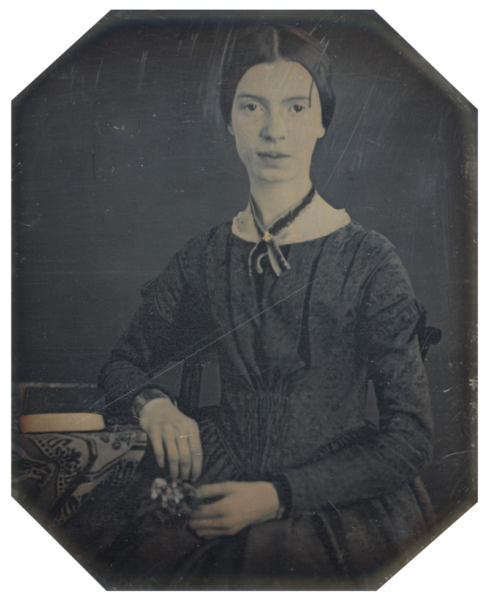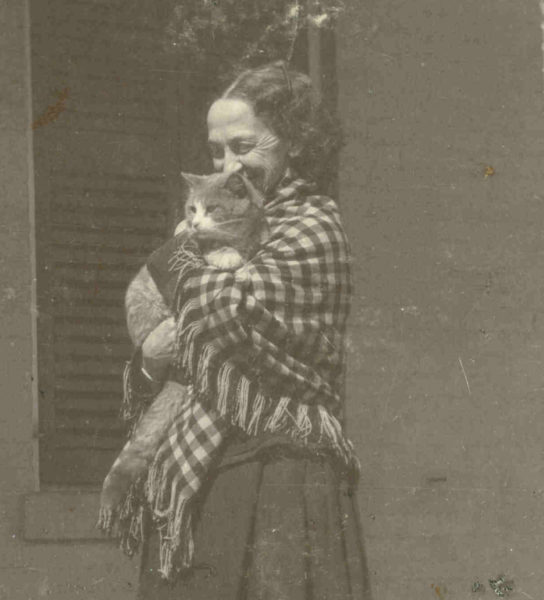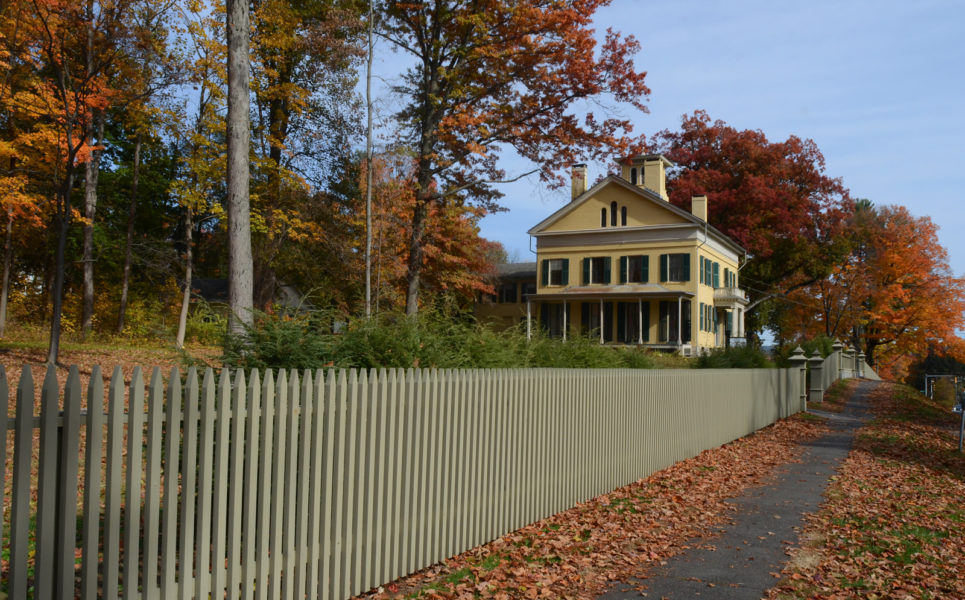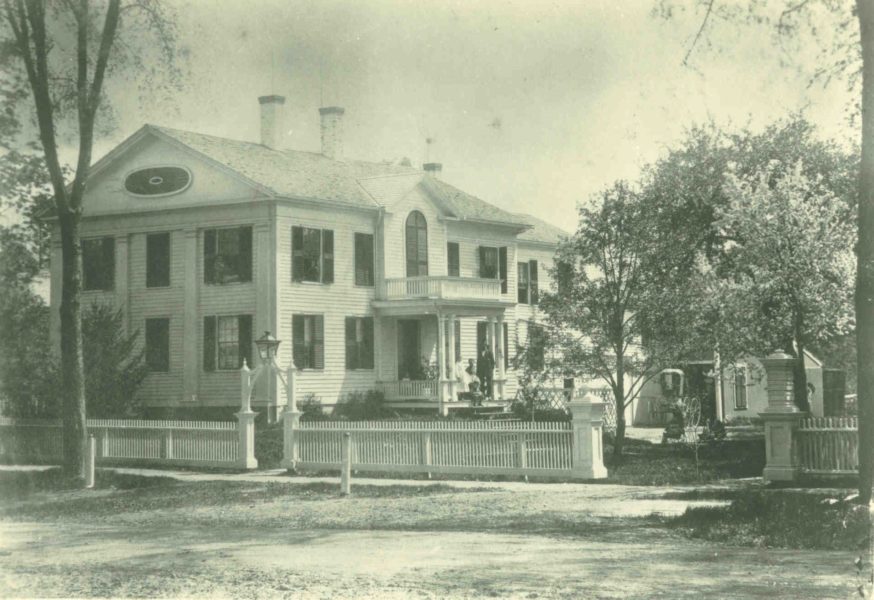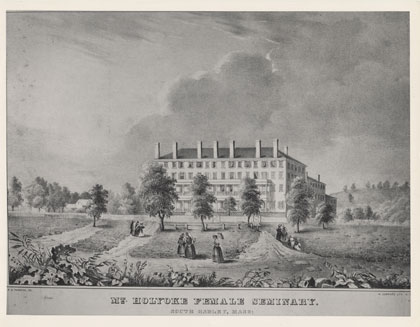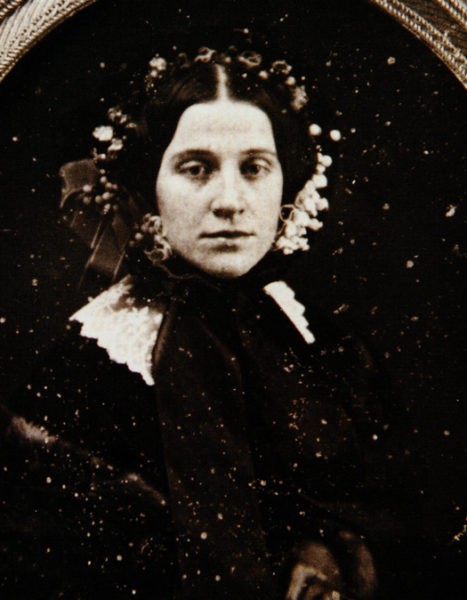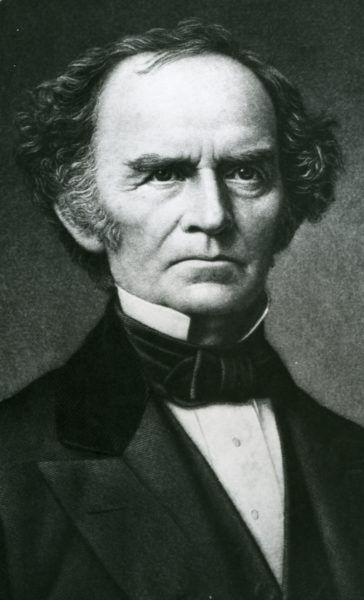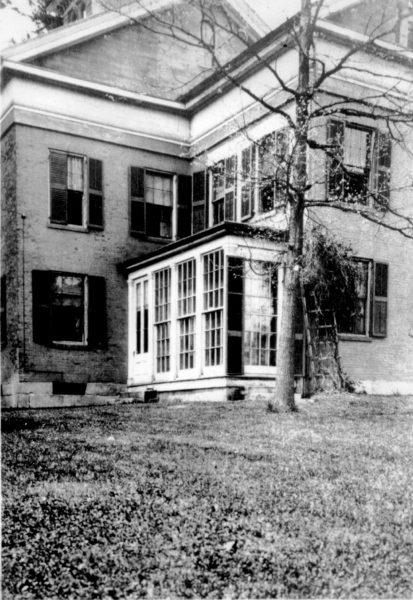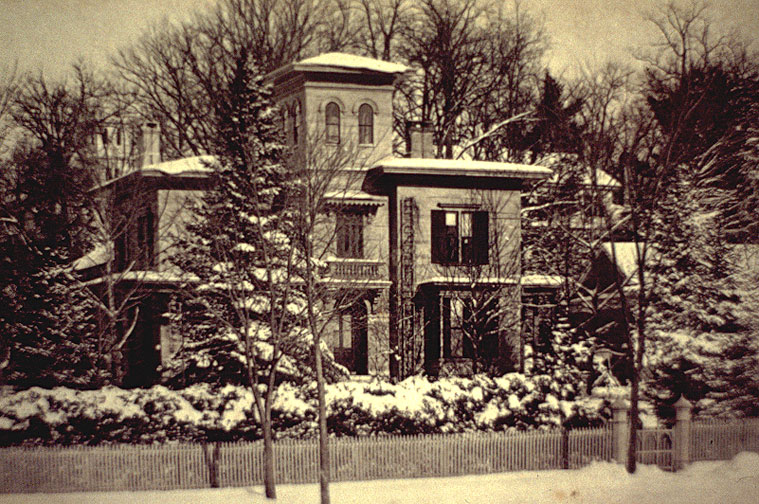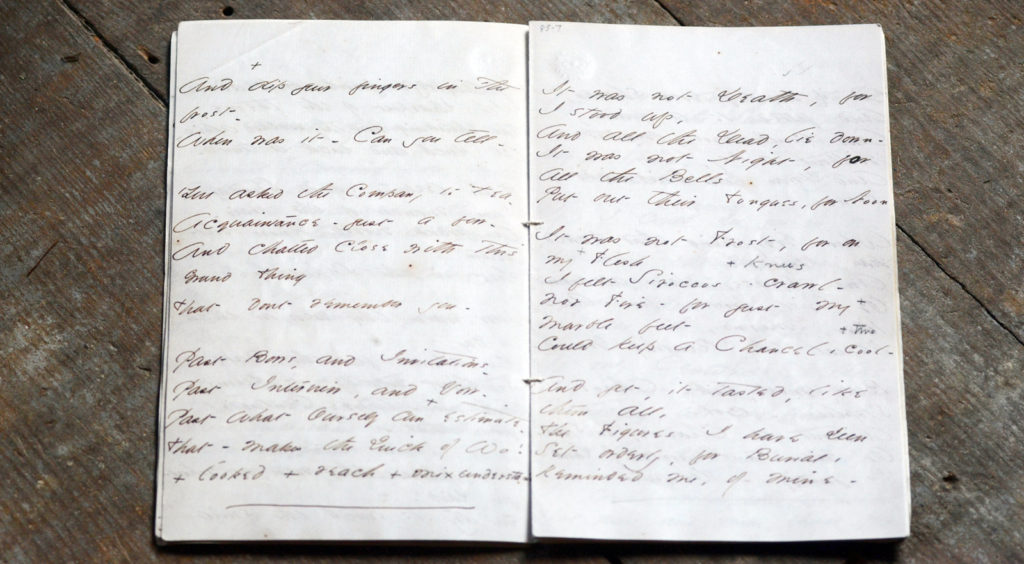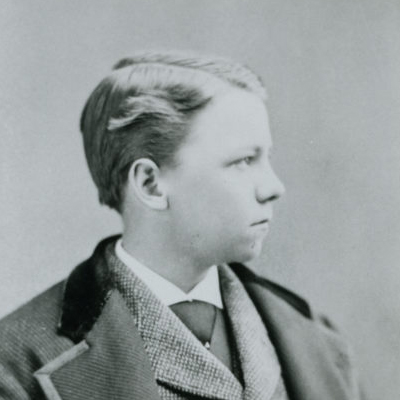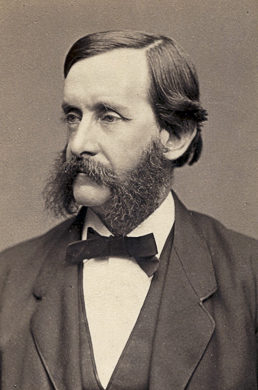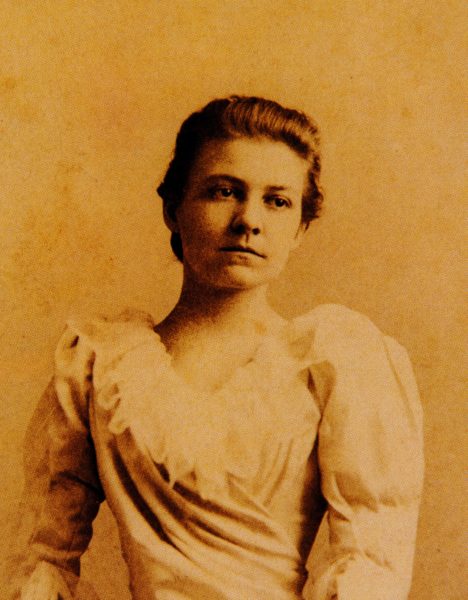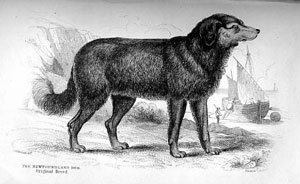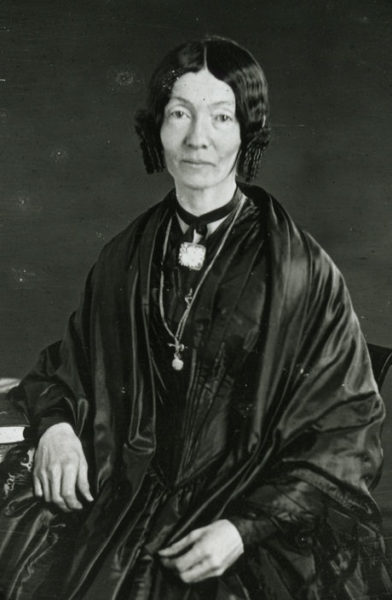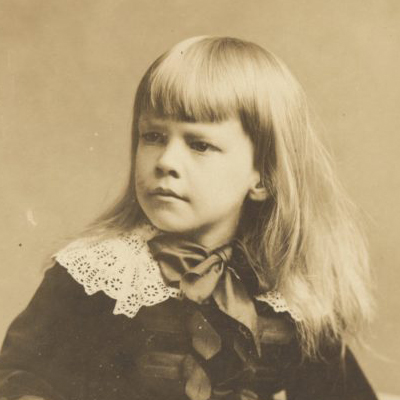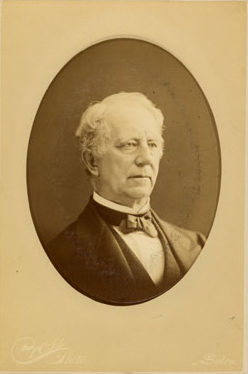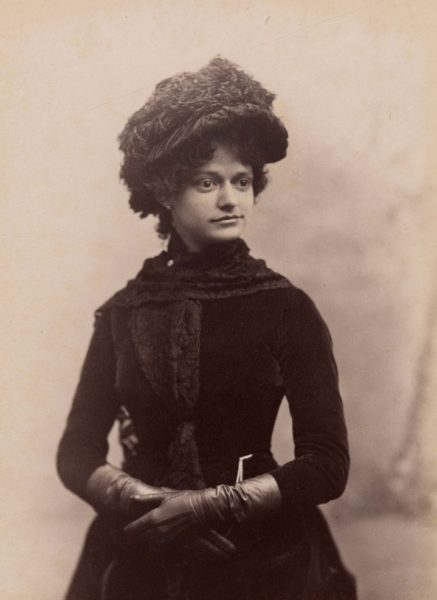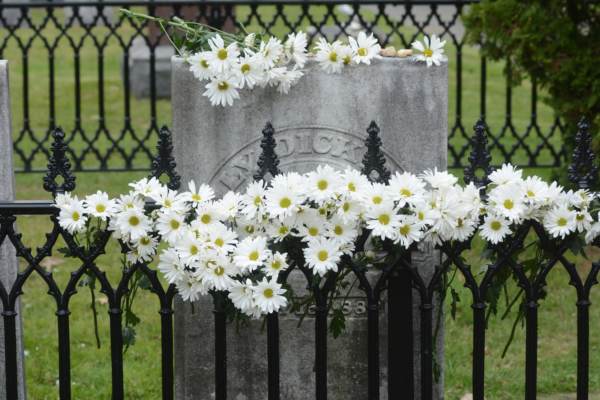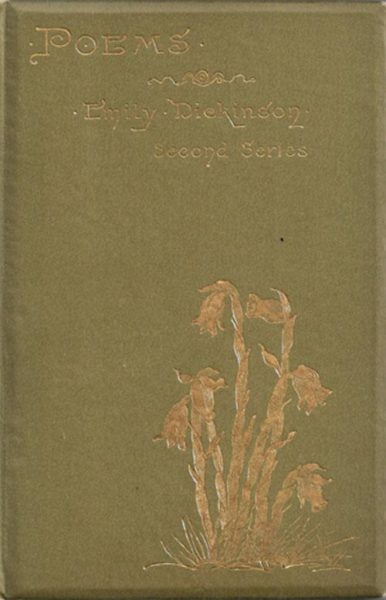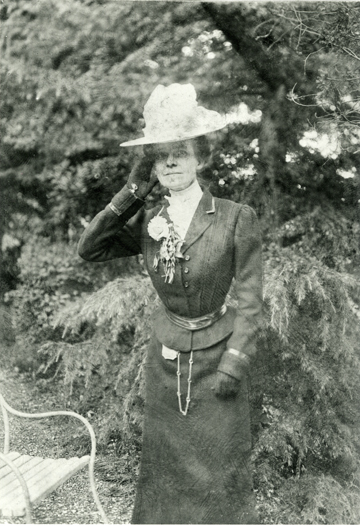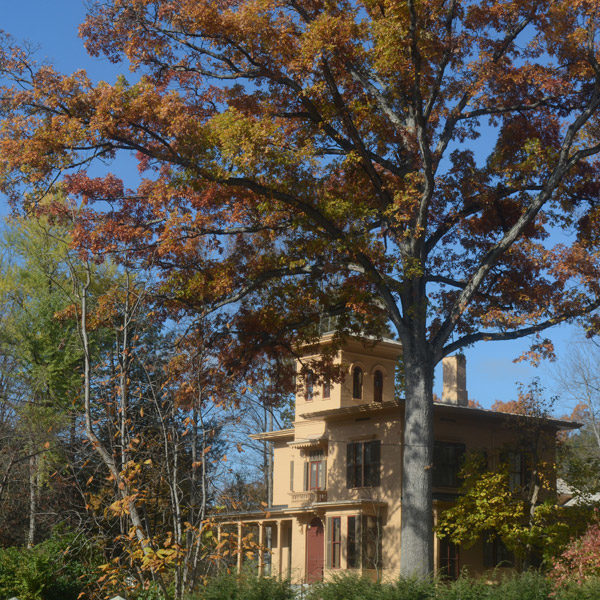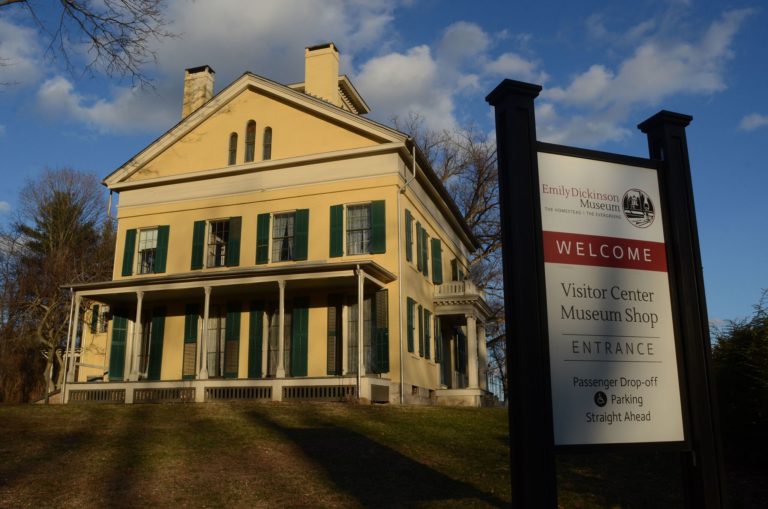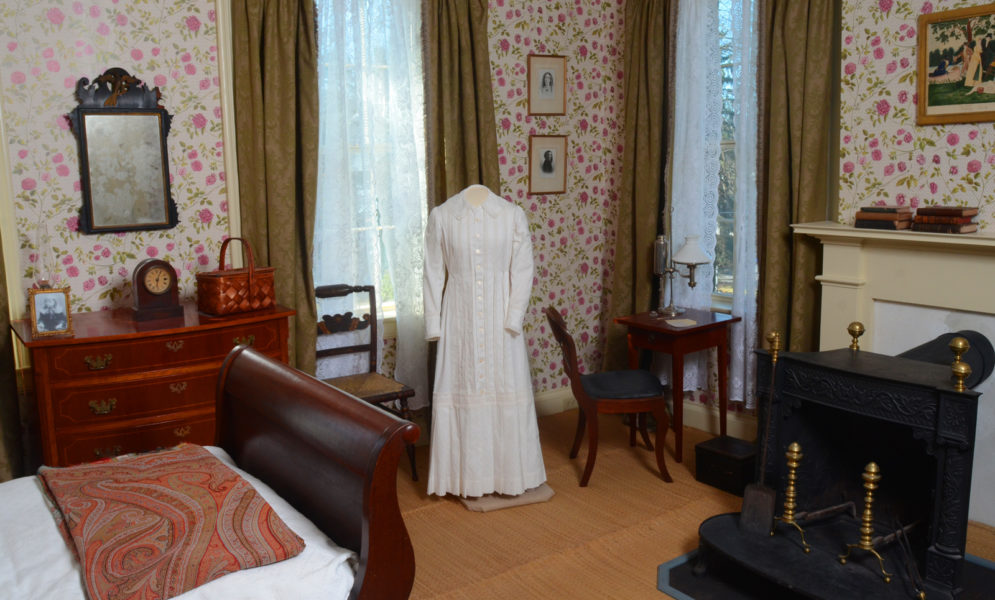Emily Dickinson's Life and Legacy

1813
Samuel Fowler Dickinson, Emily Dickinson’s paternal Grandfather, builds the Homestead on Main Street in Amherst.
“To ascertain the House
and if the soul’s within
and hold the Wick of mine to it
to light, and then return -” (Dickinson, Fr802)
1828, May 6
Marriage of Edward Dickinson and Emily Norcross, Emily Dickinson’s parents.
1829, 16 April
Birth of William Austin Dickinson, Emily Dickinson’s brother
1847, September
Emily Dickinson enrolls for one year at Mount Holyoke Female Seminary in South Hadley.
“This term is the longest in the year and I would not wish to live it over again, I can assure you. I love this Seminary and all the teachers are bound strongly to my heart by ties of affection. There are many sweet girls here and dearly do I love some new faces, but I have not yet found the place of a few dear ones filled, nor would I wish it to be here.” (Dickinson, L59)
1850, February
The earliest record of Emily Dickinson’s poetry in publication. “Magnum bonum, harem scarem” is published in the Amherst College Indicator as a valentine letter.
1851, February
Emily Dickinson’s earliest known message to Susan Huntington Gilbert. Susan, a lifelong friend and early champion of Dickinson’s poetry, would go on to receive more than 250 poems from Dickinson, more than sent to any other correspondent.
“Don’t forget all the little friends who have tried so hard to be sisters, when indeed you were alone!” (Dickinson in an early letter to Susan, L101)
1852, February 20
The Springfield Daily Republican publishes Dickinson’s “Sic transit gloria mundi” anonymously as “A Valentine.”
1855, February and March
Emily and Lavinia Dickinson visit Washington, D.C. and Philadelphia.
1861, April 12
The Civil War begins
“Sorrow seems more general than it did, and not the estate of a few persons, since the war began; and if the anguish of others helped one with one’s own, now would be many medicines …” (Dickinson, L436)
Early 1860s
Emily Dickinson’s reclusiveness increases. While the origin of this departure from social life is specifically unknown, Dickinson’s withdrawal from society also marks the beginning of one of her most productive times, artistically.
“A Charm invests a face
Imperfectly beheld –
The Lady dare not lift her Vail –
For fear it be dispelled –
But peers beyond her mesh –
And wishes – and denies –
Lest interview – annul a want –
That Image – satisfies-” (Dickinson, Fr430A)
1861, June 19
Birth of Edward “Ned” Dickinson, Emily Dickinson’s nephew
Is it true, dear Sue?
Are there two?
I shouldn’t like to come
For fear of joggling Him!
If you could shut him up
In a Coffee Cup,
Or tie him to a pin
Till I got in –
Or make him fast
To “Toby’s” fist –
Hist! Whist! I’d come!” (Dickinson, Fr189)
1862, April 15
Emily Dickinson initiates a life-long correspondence with Thomas Wentworth Higginson.
1863, September
From late April to November, 1864, Emily Dickinson spends many months in Cambridge, Massachusetts for treatment of a severe, disabling eye condition. During these two months with Boston’s leading ophthalmologist, Dr. Henry Willard Williams, Dickinson lives with her cousins Louisa and Frances Norcross in Cambridge.
“The eyes are as with you, sometimes easy, sometimes sad. I think they are not worse, nor do I think them better than when I came home. The snow light offends them, and the house is bright … Vinnie [is] good to me, but ‘cannot see why I don’t get well.’ This makes me think I am long sick, and this takes the ache to my eyes.” (Dickinson, L430, 433, 439)
1865
The Civil War ends.
1866, 27 January
Death of Carlo, Emily Dickinson’s Newfoundland
“Carlo died – […] would you instruct me now?” (Dickinson, L454)
1869
The Dickinson family hires Margaret Maher as their primary domestic help. She would remain with the Dickinsons for thirty years.
1874, June 16
Edward Dickinson dies in a Boston boarding house following his collapse while giving a speech in the Massachusetts state legislature. Edward’s death away from Amherst strikes Emily Dickinson and the rest of the Dickinson family as particularly tragic; the family has been robbed of a proper goodbye, all together, left only with the “Silence” of death.
“There marauds a sorer Robber –
Silence -” (Dickinson, Fr1315)
1875, 15 June
Emily Norcross Dickinson suffers a stroke that produces “a partial, lateral paralysis.” The next summer she falls and breaks her hip, becoming permanently bedridden, and requiring further care. For the next seven years, until her death in 1874, Emily and Lavinia cared for their mother in her convalescence.
“…have never seen a daughter so devoted.” (Harriet Jameson, Lavinia’s neighbor, 11-10-[1882], Container 5, Jameson Papers)
1875, August 1
Birth of Gilbert (“Gib”) Dickinson, Emily Dickinson’s nephew
“Emily and all that she has are at Sue’s service, if of any comfort to Baby – Will send Maggie, if you will accept her.” (Dickinson, in a message to Susan)
Late 1870s
Emily Dickinson’s romance with Judge Otis Phillips Lord begins. Dickinson’s relationship with Lord is one among many which continue to intrigue scholars. Dickinson and Lord continue to exchange letters until his death in March 1884.
1881
Mabel Loomis Todd and David Todd move to Amherst. Mabel Loomis Todd later becomes co-editor of the first volumes of Dickinson’s published poetry.
1882, 14 November
Death of Emily Norcross Dickinson
1883, 5 October
At barely eight years old, Gilbert (“Gib”) Dickinson dies tragically of typhoid fever. Gib was a delightful, intelligent little boy, whose “fascinating ways” and “witty little sayings” charmed everyone. Beyond the great love his father and mother had for him, Gib was also the last hope for Austin and Susan to carry on the Dickinson name.
“Gilbert rejoiced in Secrets –
His Life was panting with them …
No crescent was this Creature – He traveled from the Full –
Such soar, but never set …
Without a speculation, our little Ajax spans the whole…” (Dickinson, L800-801)
1884, 13 March
Death of Judge Otis Phillips Lord
1886, 15 May
Death of Emily Dickinson
1886, 19 May
Funeral for Emily Dickinson in Amherst, MA
1890, November 12
Mabel Loomis Todd publishes the first edition of Poems by Emily Dickinson (Boston: Roberts Brothers). The popular reception of this first edition of Poems initiates the publication of the Second Series (1891) and the Third Series (1896) of Poems. Mabel Loomis Todd, as editor, publishes Letters of Emily Dickinson in two volumes in 1894.
1914
Emily’s niece Martha Dickinson Bianchi publishes poems sent by her aunt to her mother, Susan Gilbert Dickinson in A Single Hound: Poems of a Lifetime. Martha Dickinson Bianchi would go on to publish many subsequent editions of her aunt’s poetry and letters, renewing the 20th century public’s interest in the life and work of Emily Dickinson.
1965
The Homestead is purchased by Amherst College and is open to the public for tours. In 1991, The Evergreens is passed to a private testamentary trust, the Martha Dickinson Bianchi Trust, which began developing the house as a museum.
2013, October 13
The launch of the Emily Dickinson Online Archive. The Online Archive is a free-access resource, allowing online visitors to view digitized images of Dickinson manuscripts held in multiple libraries and archives across the country.
